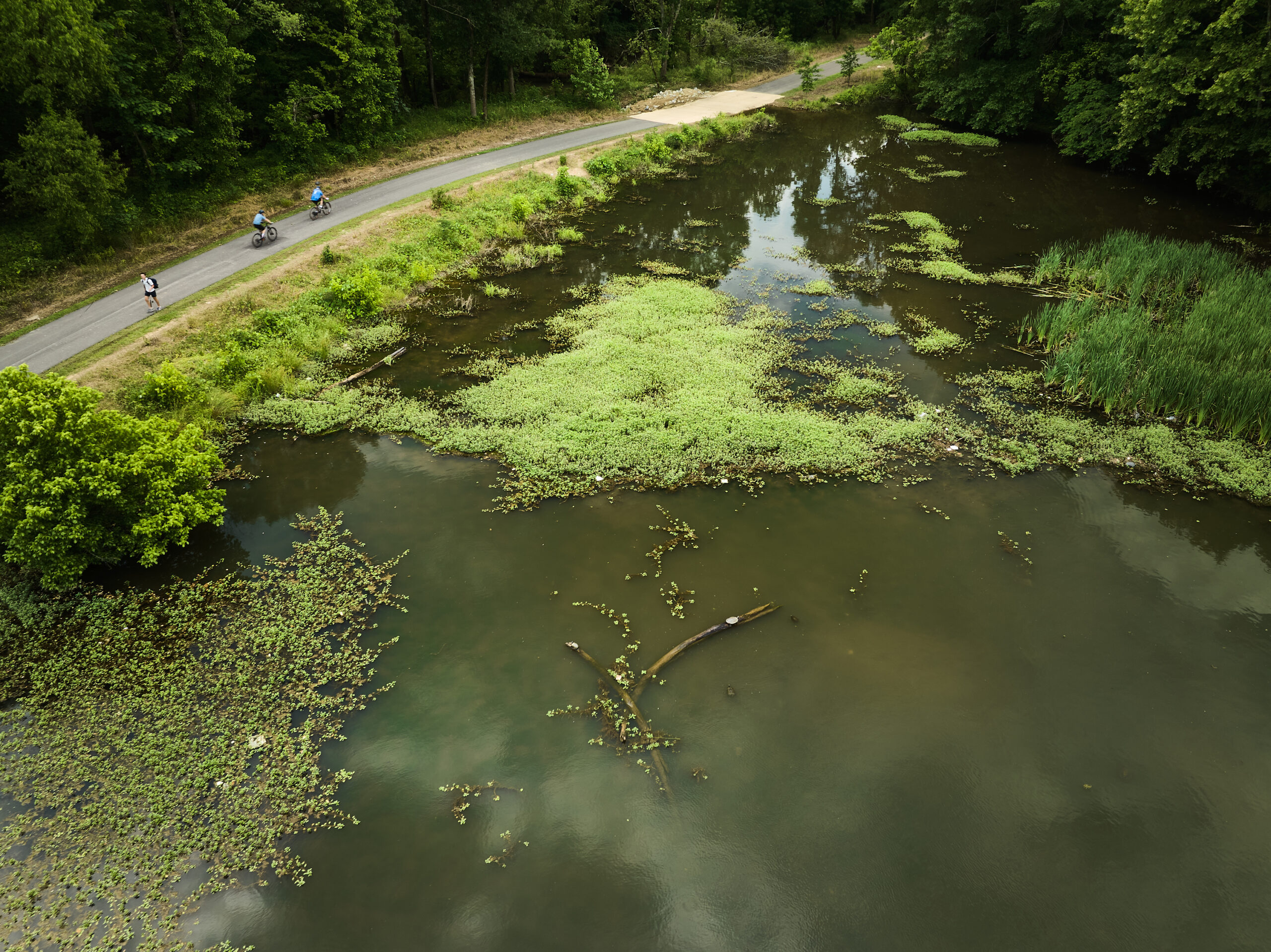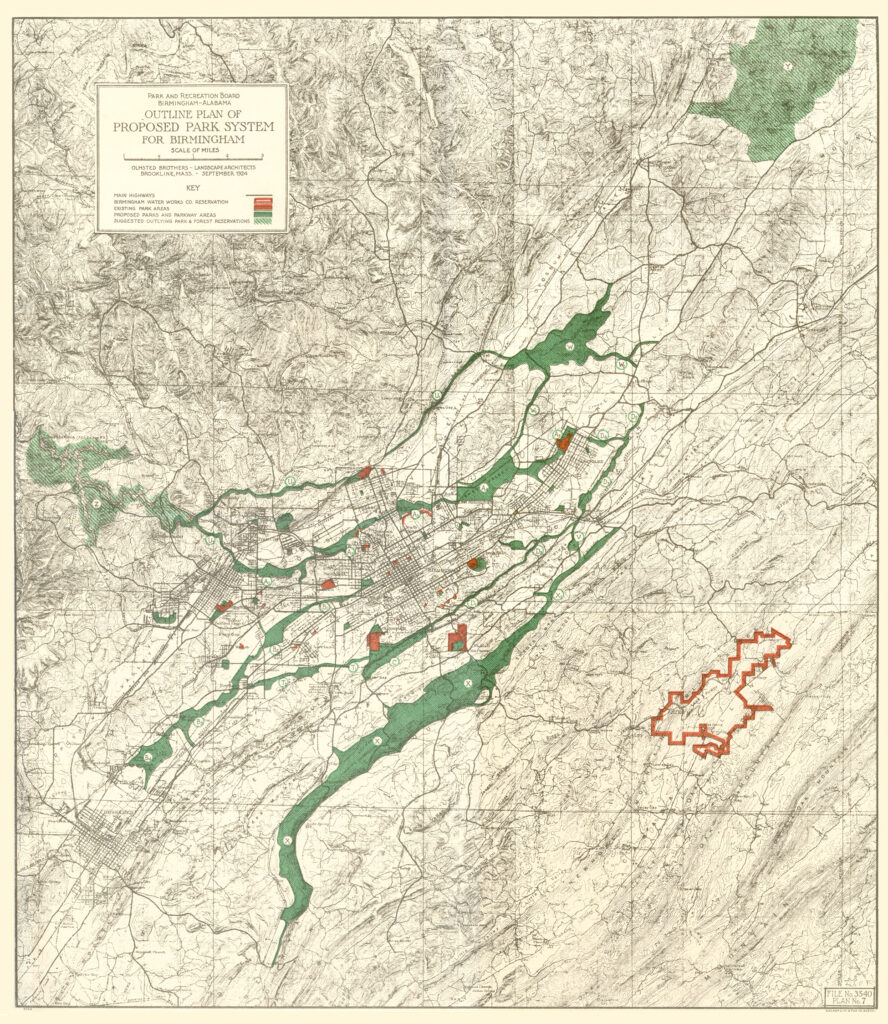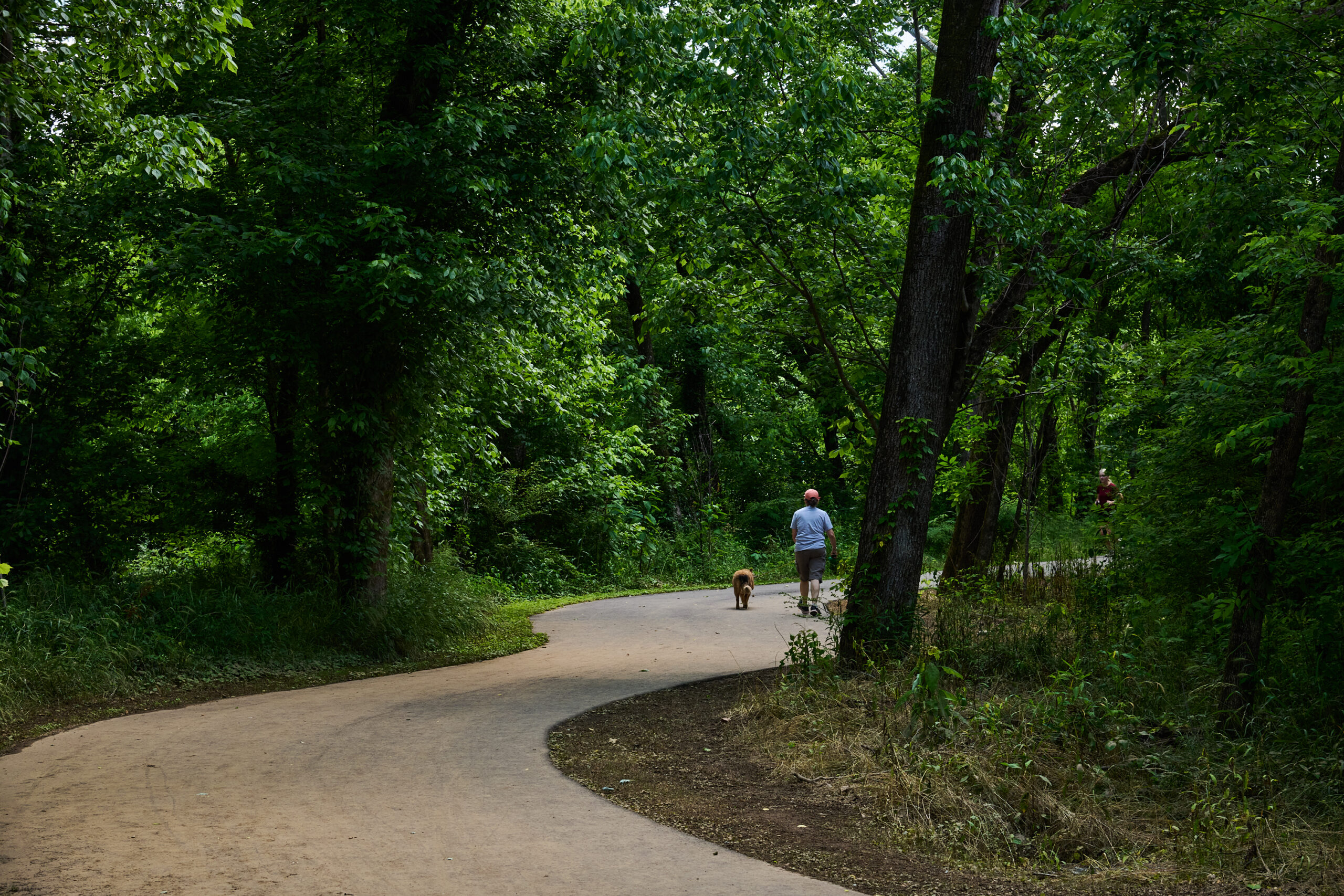
Jane Reed Ross is combining inspirational design with Olmsted’s original plans for the Red Rock Trail System to make Jefferson County a more connected, healthier place for all.
Through the years, because of her passion and dedication, Jane has established herself as a prominent voice when it comes to landscape architecture in Birmingham, but she credits much of her thought process to the concepts of landscape architect Frederick Law Olmsted.
Olmsted, widely considered to be the father of landscape architecture, is the name behind many famous spaces that he designed, such as Central Park in New York and Rock Creek Park in Washington DC.
In 1924, Olmsted worked with the Parks and Recreation Board of Birmingham to create a comprehensive system of parks and parkways for the city. This comprehensive park system is now known as the Red Rock Trail System. This plan envisioned parkways along ridges, reservations of vast lands, greenways along creeks and the creation of neighborhood parks accessible to all citizens.
Even back then, Shades Creek was a proposed greenway system in that plan that followed the valley creeks. Now, Shades Creek Greenway has opened Phase II thanks to the partnership between the Freshwater Land Trust, City of Homewood, Friends of Shades Creek, Goodwyn Mills Cawood (GMC) and many others.


How Did We Get Here?
In the early 1990’s Jane convinced the City of Homewood to pursue transportation funding for a greenway along Shades Creek that would provide residents a safe route for active transportation.
However, it was not as easy to convince people of the need for a trail system in the area. Residents were more familiar with footpaths in parks rather than a trail. Initially, people did not understand the plan for a multi-use path that would accommodate pedestrian and cycling activities and could be used for transportation and recreation. There was also opposition against the idea due to fear of its access bringing in crime.
“It was an interesting thought to consider people walking or cycling into an area to commit crimes,” Jane said. “Usually, they would arrive by car for a quick getaway, so we were able to deem the fears irrational. People are more accepting of trails now, but we still hear of cases where people worry about the crime factor. It took getting Phase I of the Shades Creek Greenway built to illustrate how this type of multi-use trail functions. Once we were able to get people using it, it became a hit.”
Part of Jane’s inspiration for Shades Creek came from her time in Washington DC where she was inspired by the trails of Rock Creek Park, the Chesapeake & Ohio Canal Trail and the Mount Vernon Trail. The other part was more strategic as she mentally implemented the concepts Olmsted used when designing Rock Creek Park.
Olmsted’s Concepts
Olmsted used four core principles when it came to designing public spaces.
- Utilizing the “Genius of the Place”
- Creating spaces for social interaction
- Orchestration of movement
- Sustainable design and environmental conservation
A “Genius of the Place” refers to enhancing the natural character of a site and bringing out its natural beauty. Olmsted believed in respecting the place you were about to develop so that over time it wouldn’t lose its original luster. Having intimate knowledge of the site is crucial to make this happen. Additionally, these sites and public spaces often become a hub for the local community. Because of this, Olmsted believed public spaces, specifically green spaces, should be an inviting and accessible location for all. A common goal is to not only create a space people can come to, but a space people want to come to.
Olmsted refers to the orchestration of movement, and this is done through designing pathways and transportation corridors that will create efficient movement throughout the site while remaining intimate and secluded. The composition and layout should subtly direct movement throughout the space while having separation of ways between different kinds of traffic.
A piece that encompasses all of the above is Olmsted’s dedication to sustainable design and conservation. He greatly valued the idea that what is natural to the site, location, state, etc., should continue to grow there. He believed these features should require minimal maintenance and promote ecological health.


How Shades Creek Reflects Olmsted’s Concepts
The Red Rock Trail system, featuring Shades Creek, was originally proposed in 2010, with Jane working with the Freshwater Land Trust on a master plan funded by the Jefferson County Health Department. Once completed, the trail system will consist of seven corridors: Jones Valley and Valley Creek, Village Creek, Five Mile Creek, Shades Creek, Cahaba River and Turkey Creek. This was a similar layout that the Olmsted brothers outlined in 1924. From then to now, the Red Rock Trail system has been able to grow and bolster off of the Olmsted Brothers’ ideas and concepts.
Those who are developing Shades Creek, including Jane, are using his concepts in multiple aspects. The team continued to enhance the Shades Creek site, completing 3.7 miles of trails that feature multiple neighborhoods, pedestrian bridges, creekside views and more.
It was a place for social interaction before construction was even complete. “You can’t stop people from using the trail at this point,” Jane said in the development between Phase I and Phase II of the greenway. By keeping corridors relatively level and having an ADA-compliant trail, Shades Creek truly is a place for all. This also plays into the orchestration of movement. With Shades Creek being a part of the Red Rock Trail system, the wayfinding signage provides branding along the way and marks entry points and trailheads along the trail. The whole system is becoming more recognized by the Freshwater Land Trust’s excellent placement of these signs and markers.
With its premium location, conservation and sustainable design were easy. The trail follows the natural creek, and wildlife, other than laying paths. Keeping a continual flow was so important that Jane and her team were able to plan how to cross under three major roadways seamlessly.
Jane has been a piece to the Shades Creek puzzle for decades – she even has photos to prove it. This photo is of her husband, Neil, and their sons, scoping out a part of Shades Creek Greenway when it was just an idea. That exact land is now part of the Shades Creek Trail, a corridor in the Red Rock Trail System. Starting with the Olmsted Brothers’ initial plan, the Freshwater Land Trust has championed the Greater Birmingham Area to become a hotspot for parks, trails, green spaces and more. Jane is pleased to be part of this effort.
“The beauty of a quality space, how it connects in the community and how it brings people together, has always appealed to me,” Jane said. “But it’s the families I see enjoying it who make me proud of what we’ve created. We used to be the family taking our young children to parks and trails, now our sons are grown, so seeing generations continue to be involved, especially at Shades Creek, is a highlight for me.
I’m a very fortunate person. I’ve gotten to work on so many different projects, and I’ve met so many great people and seen projects come together that improve people’s lives and the quality of our environment.”